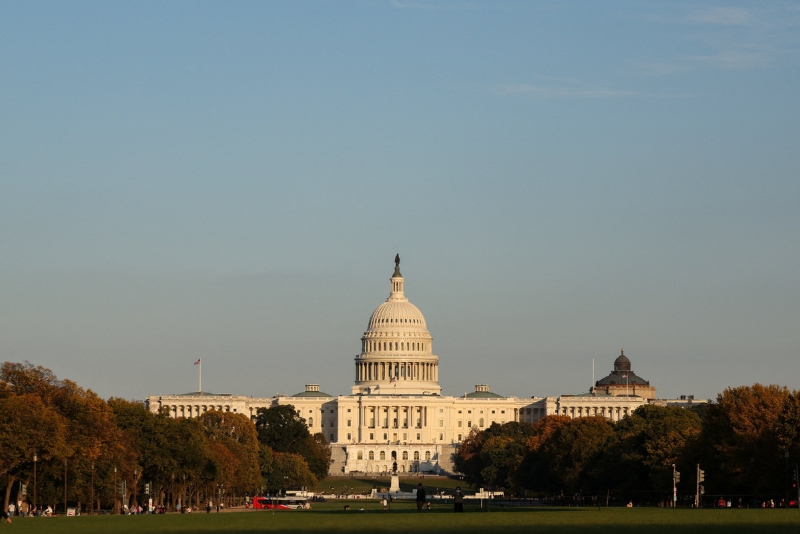Impasse continues with consequences being felt in many key sectors across US

The US Capitol building, weeks into the continuing US government shutdown, in Washington, DC, US, October 21, 2025. [Photo/Agencies]
WASHINGTON — The federal government shutdown continued on Monday, marking the third-longest shutdown in US history.
The shutdown this time, which began on Oct 1, has become the longest full government shutdown in US history, and the third-longest when including partial shutdowns.
If it extends past Tuesday, it will surpass the 21-day shutdown of 1995 to claim second place. Only the 35-day partial shutdown during Donald Trump's first term, from December 2018 to January 2019, has lasted longer.
The shutdown's impact grew more severe on Monday, with even pivotal sectors being penetrated.
The Department of Energy's National Nuclear Security Administration, the federal agency tasked with overseeing the US nuclear stockpile, has begun furloughing employees as part of the ongoing federal government shutdown, Energy Secretary Chris Wright said Monday.
The NNSA has said it could furlough up to 1,400 workers as a result of a funding lapse from the shutdown. Nearly 400 federal workers would remain on the job, along with NNSA contractors. The agency, a semiautonomous branch of the Energy Department, also works to oversee nuclear materials around the world.
Also in this week, researchers from the Centers for Disease Control and Prevention are being forced to skip IDWeek, the largest annual meeting of infectious disease experts, due to the government shutdown, missing out on high-level discussions not long after surges in measles and whooping cough hit the US.
The CDC typically sends scores of researchers and outbreak investigators. But of the hundreds of speakers listed in the printed program for the four-day conference, only about 10 were identified as CDC scientists. And even that small number didn't show up.
Federal scientists aren't being paid and conference appearances are postponed unless they are funded outside of annual government budgets.
Some industries are hurt worse than others.
The Guardian reported that many facilities such as Smithsonian Institution museums and the National Zoo are now closed to visitors. According to the US Travel Association, travel economy is expected to lose $1 billion a week as travelers change plans to visit national parks, historic sites and the nation's capital.
The US Chamber of Commerce said that the Small Business Administration supports loans totaling about $860 million a week for 1,600 small businesses. Those programs close to new loans during the shutdown. The shutdown also has halted the issuance and renewal of flood insurance policies, delaying mortgage closings and real estate transactions, The Associated Press said.
The Federal Aviation Administration has reported air controller shortages in cities across the US. Flight delays have spread to airports in Nashville, Tennessee, Dallas, Newark, New Jersey and more.
So far, the public is rather split on who is to blame for the impasse.
Roughly six in 10 US adults say Republicans in Congress have "a great deal" or "quite a bit" of responsibility for the shutdown, while 54 percent say the same about Democrats in Congress, according to the poll from The Associated Press-NORC Center for Public Affairs Research.
Economic impact
One estimate from Oxford Economics said a shutdown reduces economic growth by 0.1 to 0.2 percentage points per week. A shutdown that lasts the entire quarter, which has never occurred, would reduce growth for those three months by 1.2 to 2.4 percentage points.
The administration has put on hold roughly $18 billion to fund a new rail tunnel beneath the Hudson River between New York City and New Jersey and an extension of the city's Second Avenue subway.
It also canceled $7.6 billion in grants that supported hundreds of clean energy projects in 16 states, all of which voted for Kamala Harris in last year's presidential election.
The federal government employed nearly 2.3 million civilian employees as of March 31. The Congressional Budget Office estimated that about 750,000 of those employees would be furloughed each day during a shutdown. That means they don't report to work until the shutdown ends. Others are considered "excepted" and do go to work, helping to protect life and property and perform other essential services.
AGENCIES — CHINA DAILY





